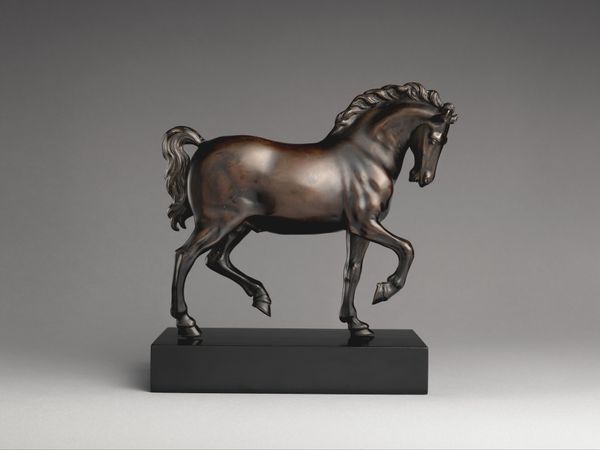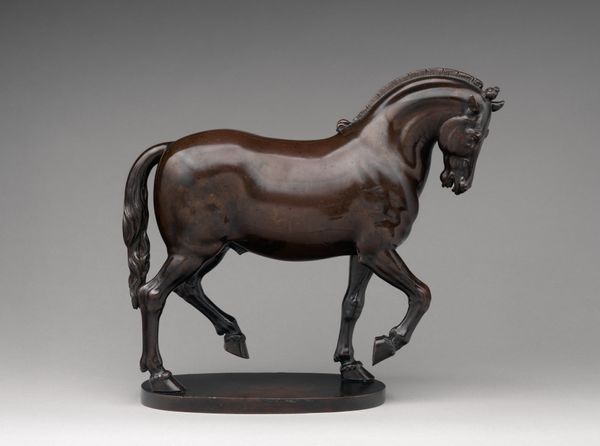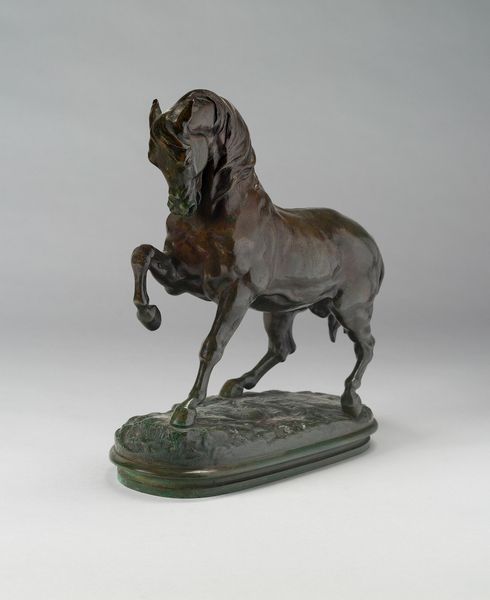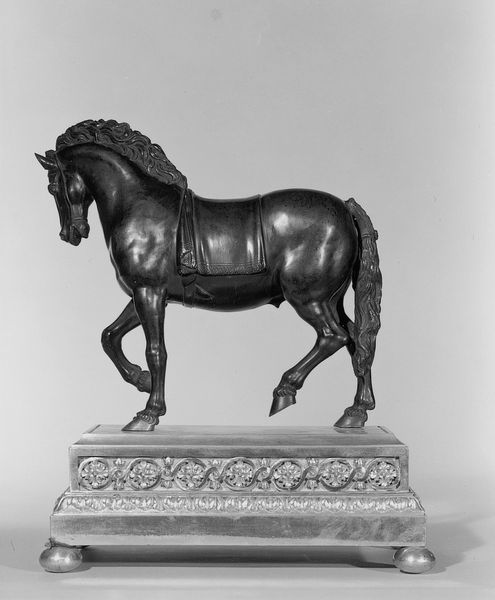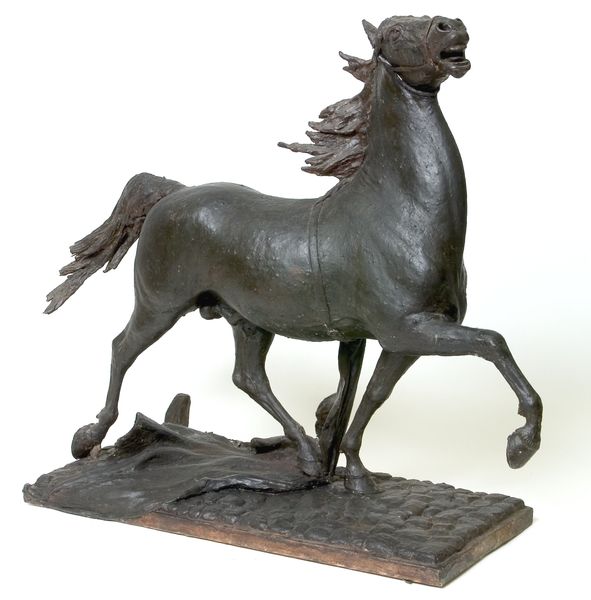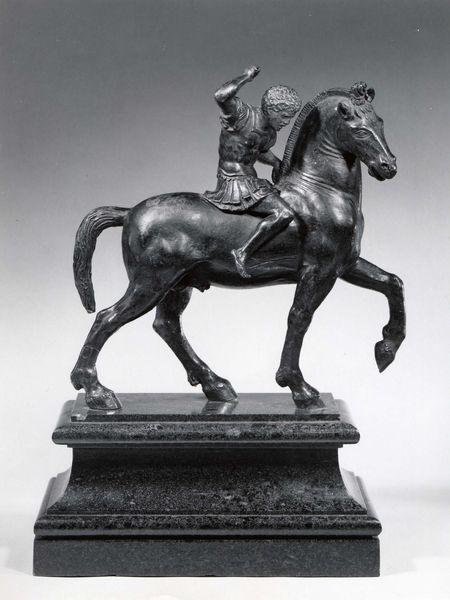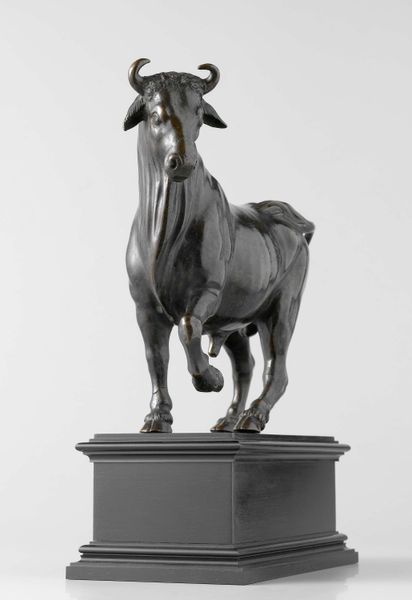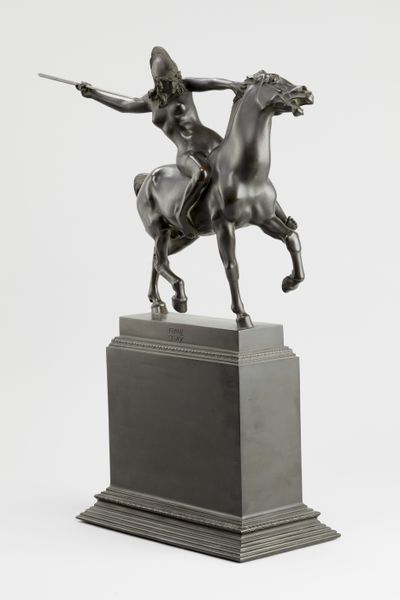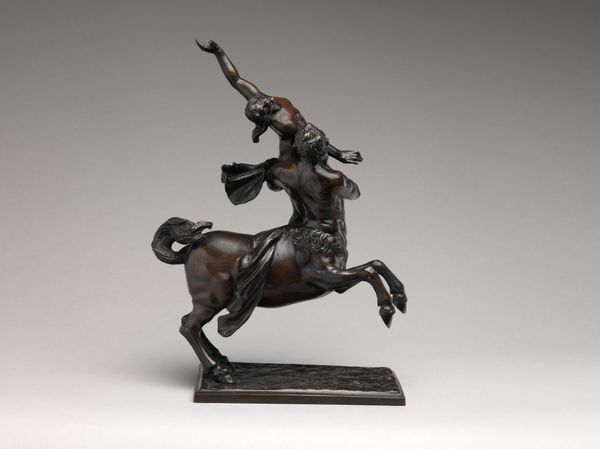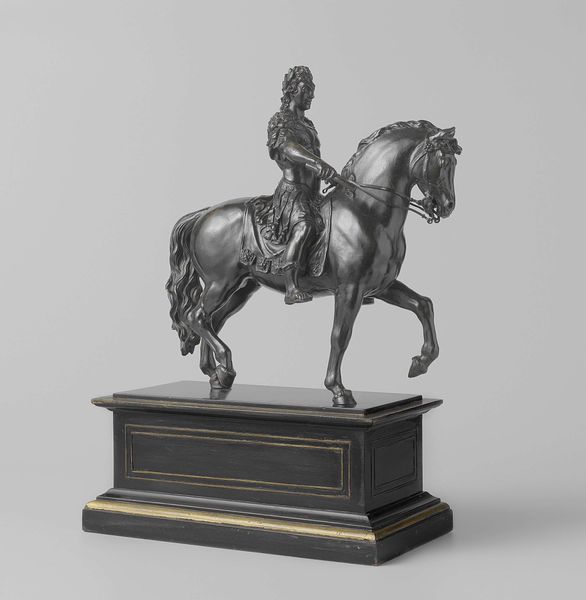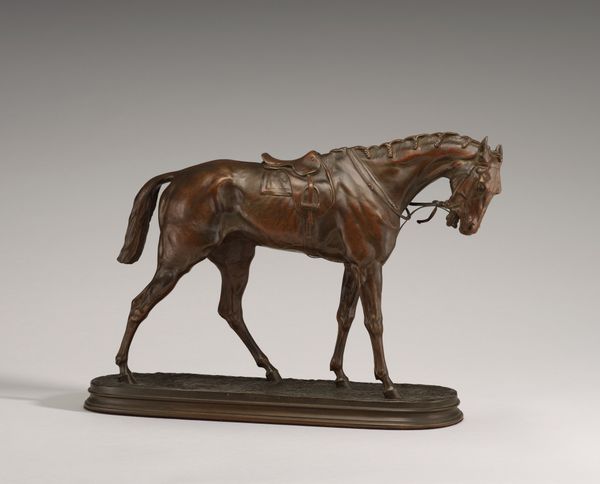
Dimensions: 49 cm (height) x 50.7 cm (width) x 22.6 cm (depth) (Netto)
Theodor Philipsen sculpted this bronze of "A Loose Horse," sometime around the turn of the 20th century. With its tense musculature and flaring nostrils, the horse embodies raw, untamed power. But what does it mean to depict this animal – a creature often associated with labor and servitude – as "loose," as free? Consider the time and place of this sculpture's making. Denmark, like much of Europe, was undergoing rapid industrialization. Perhaps Philipsen's horse is a commentary on the changing relationship between humans and animals, or even a symbol of individual liberation in an increasingly regimented society. Further research into Philipsen’s involvement with the avant-garde and his political leanings could reveal a great deal more. To understand this sculpture fully, we need to look at the socio-political context in which it was created. Art history allows us to appreciate art as a product of its time.
Comments
No comments
Be the first to comment and join the conversation on the ultimate creative platform.
